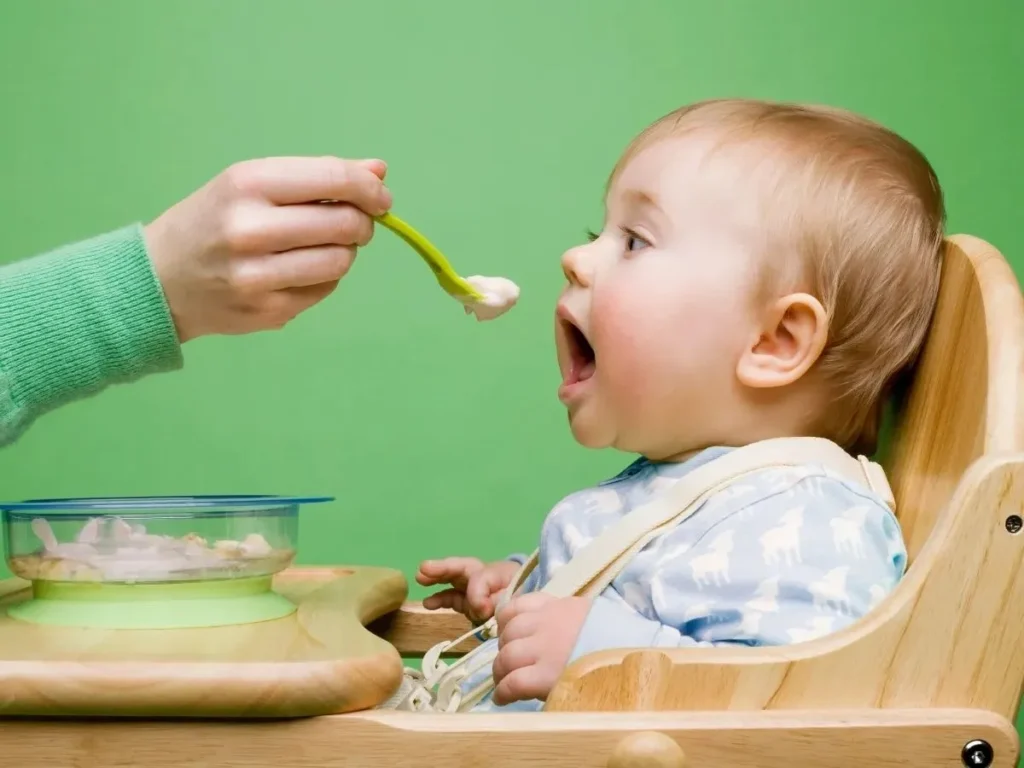Wondering the way to progressively introduce solid food to your baby? We’ve been given you protection! From the primary spoonful to making sure a balanced weight-reduction plan, analyze the nice practices to make this thrilling milestone pressure-unfastened and enjoyable.
Introducing strong ingredients can feel overwhelming, however don’t fear. With our smooth suggestions, you will be a pro in no time, helping your baby regularly transition to solid meals with self assurance.
Starting solids is an important part of your baby’s improvement. Knowing whilst and a way to start could make a huge distinction of their fitness and eating behavior. We’ll spoil down whilst babies are ready and a way to regularly introduce strong meals for a clean transition.
When to Start: Signs Your Baby Is Ready for Solid Foods
Babies generally show readiness for solid meals around six months. Key signs encompass the potential to sit up without aid, showing interest in food, and the ability to swallow food as opposed to pushing it out with their tongue (tongue-thrust reflex).
The Best First Foods for Babies: What to Introduce First
Nutrient-Rich First Foods
Start with iron-fortified cereals, pureed greens, and end result. Iron is crucial for mind improvement, and nutrient-dense meals provide nutrients to assist boom.
Introducing Single Ingredients
Begin with unmarried-ingredient foods to monitor for any allergies. Single components like pureed carrots or peas help isolate capability allergens.
How to Gradually Introduce Solid Food to Your Baby’s Diet?

Begin with small spoonfuls of pureed ingredients once a day, progressively increasing range and component sizes over the years. This technique allows your toddler to adjust to distinctive textures and flavors without problems.
Common Mistakes to Avoid When Introducing Solids
Avoid introducing solid ingredients too early or supplying choking risks like whole grapes or nuts. Rushing the manner may additionally weigh down your infant, mainly to food refusal or digestive troubles.
How Much Solid Food Should You Give at First?
Start Small and Gradually Increase
Begin with small amounts, consisting of one to two tablespoons of meals, and increase the portion size as your infant indicates interest. Gradually building up to three meals in a day by way of 8 to 9 months.
Let Baby’s Appetite Guide You
Babies will clearly signal while they’re full, which includes turning their head away or refusing to open their mouth. Let their appetite decide component sizes instead of forcing meals.
The Role of Breastfeeding and Formula During the Transition
Continue breastfeeding or components feeding alongside stable meals creation. These stay number one resources of nutrients till round three hundred and sixty five days, complementing the sluggish addition of solids.
Essential Tools for Feeding: Spoons, Bowls, and High Chairs
Choosing Baby-Friendly Utensils
Opt for gentle-tipped spoons and shallow bowls designed for babies. These equipment are gentle on gums and inspire easy feeding.
High Chairs for Safe Feeding
A steady, supportive excessive chair with safety straps is vital for feeding. Ensure your child is seated upright to minimize choking dangers.
How to Spot Food Allergies When Gradually Introducing Solids?

Introduce new foods separately to screen for symptoms of allergies, which include rashes or digestive issues. Consult a pediatrician if allergic reactions arise to ensure your infant’s safety.
Establishing a Feeding Schedule: Balancing Solids and Milk
Create a regular feeding schedule that incorporates solid ingredients at the same time as keeping breastfeeding or system. An established recurring supports higher digestion and helps your baby set up consuming behavior.
Purees vs. Baby-Led Weaning: Which Method is Right for You?
Benefits of Purees
Purees provide a managed manner to introduce a variety of meals, making it easier to display portion sizes and ensure the right nutrients in each chunk.
Advantages of Baby-Led Weaning
Baby-led weaning encourages self-feeding and enables increased motor abilities. Babies explore food textures and flavors at their very own pace, fostering independence.
Dealing with Picky Eaters: How to Encourage New Flavors
Introduce a number of flavors and textures early to reduce picky ingesting habits. Repeated exposure to new foods, even if first of all rejected, can cause more reputation over time.
What to Do If Your Baby Refuses Solid Food
If your infant refuses solids, take a destroy and try again later. Offering extraordinary textures and flavors steadily may additionally reignite interest at the same time as warding off pressure-feeding.
Gradually Increasing Food Variety: Introducing Fruits, Veggies, and Grains
Start with Mild Flavors
Begin with mild-flavored foods like apples, candy potatoes, and rice cereal. These are simpler to simply accept and digest, providing a strong basis for future flavors.
Introducing Proteins and Whole Grains
Gradually add proteins which includes lentils, chook, and smooth-cooked grains to diversify your child’s food plan
Foods to Avoid within the Early Stages of Introducing Solids
Avoid honey, unpasteurized dairy, and ingredients with high salt or sugar content material throughout the early levels. These meals pose health dangers or lack nutritional value for developing infants.
The Importance of Patience: Taking It Slow with Solid Foods
Progress at a pace that suits your toddler’s readiness and luxury. Gradually increasing the variety and portion sizes fosters a wonderful dating with meals and supports lengthy-term fitness.
Why Gradually Introducing Solid Food Sets the Foundation for Healthy Eating Habits?
Introducing solids at a slow pace promotes wholesome eating behavior, helps proper increase, and ensures your child develops a preference for nutritious ingredients over time.
FAQ’s:
When do I need to start introducing stable foods to my infant?
Most babies are geared up for solids around six months, however it’s important to search for developmental signs and symptoms including sitting up and displaying hobbies in food.
What are the fine first ingredients to introduce?
Start with iron-fortified cereals, pureed vegetables, and end result. These offer critical nutrients to your child’s boom.
How much stable food do I have to deliver initially?
Begin with 1-2 tablespoons in step with meal and steadily boom based totally on your infant’s urge for food and comfort.
How can I inform if my toddler is allergic to food?
Look for signs and symptoms like rashes, swelling, or digestive disillusionment. Introduce new ingredients one after the other to become aware of potential allergens.
Should I keep breastfeeding or component feeding while introducing solids?
Yes, continue breastfeeding or system feeding, as they stay essential sources of nutrients until one year.
Conclusion:
Gradually introducing strong ingredients is an important milestone to your infant’s development. Following a structured, patient approach ensures a smooth transition, fosters healthful consuming conduct, and facilitates you keep away from common pitfalls.

